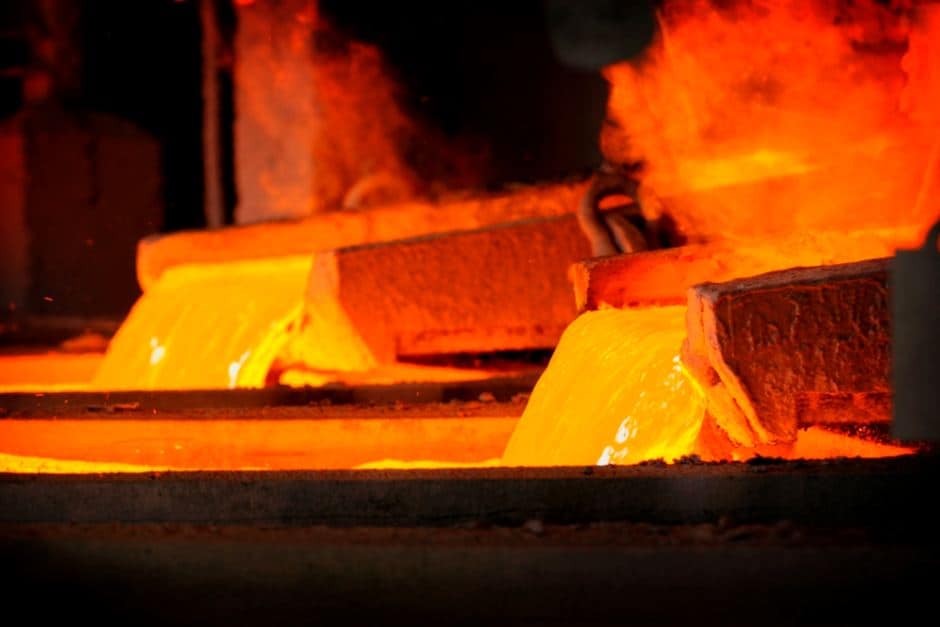
Over the course of this week base metals have diverged in price trajectories, while in macro politics global attention has converged on the US.
US President Donald Trump cancelled his Davos appearance to stay at home, where he and congressional Democrats continue to not get along, and federal workers go unpaid.
Trump’s absence throws into doubt any hopes that the US and China may wrap up trade talks neatly and bring a conclusion to the trade war.
Looking at base metals prices on the LME, copper continues to dither below US$6,000 a tonne — despite a rise in value over the week, by Thursday (January 10) the red metal was valued at US$5,907.50.
Zinc continues to hop around. Although it improved in value from the first trading day of 2018 through to Tuesday (January 8), most of those gains were wiped out on Thursday, when it fell from US$2,530 a tonne to US$2,475.
Nickel on the other hand has continued its rise through 2019, reaching US$11,220 a tonne by Thursday. The moonlighting battery metal started the year at US$10,435 and has risen every trading day since.
Base metals top news stories
This week base metals news was all about copper. In Canada, Imperials Metals’ Mount Polley mine is slated for shutdown until the copper price increases, Vedanta (NSE:VEDL) received some good news from the Supreme Court of India about its Sterlite smelter in Tamil Nadu, while Indonesia has claimed ownership of the Grasberg mine in Papua province … just as its output looks set to plunge.
1. Copper Price Decline Takes Imperial’s Mount Polley Offline
Continuously declining copper prices have claimed a Canadian victim, with Imperial Metals announcing it will be suspending operations at its Mount Polley mine in BC.
In the company’s Monday (January 7) announcement, released after the Toronto Stock Exchange closed for the day, Imperial cited only declining copper prices as the reason behind the suspension, which will take full effect in May.
“Full operations will resume once the economics of mining at Mount Polley improve,” says the release.
2. Vedanta Wins (Interim) Supreme Court Backing for Sterlite Restart
The Indian state of Tamil Nadu has been told by the Supreme Court in an interim decision to comply with a Green Tribunal (NGT) order allowing Vedanta to reopen its long-shuttered Sterlite copper smelter in Thoothukudi.
In December, a committee of the NGT said that Tamil Nadu had insufficient grounds to keep the Sterlite smelter closed, calling the shutdown “unsustainable” and against the principles of natural justice. The NGT had been approached by Vedanta, which said it had not been given the right to appeal the state’s decision to close the smelter.
The 400,000-tonne-per-year smelter was shuttered last April by Vedanta for maintenance, and forcefully by the Tamil Nadu government in May after protests over accusations of excess pollution turned deadly.
3. Indonesia: Grasberg Copper Production Set to Plunge in 2019
Indonesia has flagged significantly reduced copper concentrate exports as well output from its recently nationalized Grasberg mine in Papua province.
Yunus Saefulhak, director of minerals at the Indonesian Energy and Mineral Resources Ministry, said Wednesday (January 9) that the government expects exports of copper concentrate from Indonesia to fall by 300,000 to 800,000 tonnes in 2019, as Grasberg’s output declines from 2.1 million tonnes of concentrate in 2018 to 1.2 million tonnes in 2019.
Grasberg is the fourth-largest copper mine in the world (at 2017 production levels), and recently became majority owned by the Indonesian government after a deal was struck between former owner-operator Freeport-McMoRan and its joint venture partners Rio Tinto and the Indonesian government.
In other base metals news
While the still-developing situation in the Democratic Republic of Congo has observers keeping track of any potential impact on cobalt prices, the nation is also Africa’s largest copper producer, meaning it’s not just a story for battery metals enthusiasts to watch.
Over in South America, a Fitch Solutions Macro Research report says that increased exploration in Ecuador has seen risk to projects increase as locals push back against mineral concessions on their land. The report states that higher risks mean junior mining companies will remain the primary explorers while major operators stay away.
Another Fitch report suggests that copper demand will rise through 2019, with any increases in production met by South American projects.
Staying with copper and in South America, Chilean state copper agency Cochilco reported this week that it expects its copper industry to triple its use of sea water in mining amid growing water shortages in the arid mining regions of the country.
Copper output from Chile is also expected to exceed 6 million tonnes in 2019, according to Cochilco, which also forecast increases in production of up to 30 percent over the next 10 years.
Shifting over to iron, a rise in iron ore values into the US$70-per-tonne range was denounced as “unsustainable” by Goldman Sachs (NYSE:GS) and Morgan Stanley (NYSE:MS), with analysts saying they predict iron ore prices will fall over the next six months.
Finally, in Australia, BHP has a bit of a headache at the moment, with the train operator blamed for the forced derailment of a runaway 268-wagon train in November suing the company over his termination.
